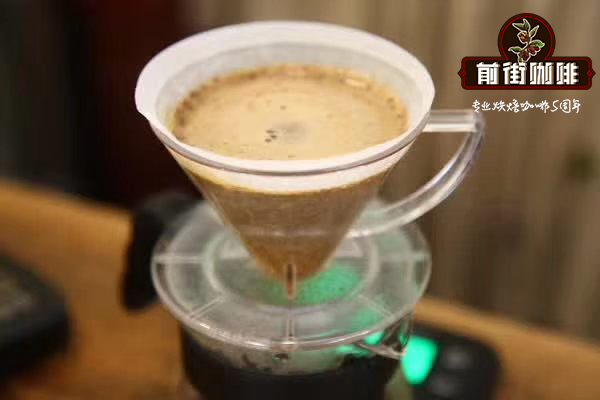Peruvian coffee producing area Peruvian hand-made coffee beans recommend why Peruvian coffee is bitter

Professional coffee knowledge exchange more coffee bean information please follow the coffee workshop (Wechat official account cafe_style)
Mercanta sends a member to Peru every year to select the best new crops to join our supply. The 2019 plot is produced by many farmers who live in Cutervo province.
Like many farms in this area, the name of each farm is based on trees or natural features that stand out in the wilderness. This is a common occurrence in the area. The name of the farm will be symbolic, referring to distinctive trees or characteristics that help to distinguish the farm. Profits from coffee cultivation are usually small; however, families in the region create livelihoods for themselves and their families, relying almost entirely on coffee for their income. Although other agricultural products are also grown, coffee cultivation is often the only source of income, and all other fruits of labour are reserved for personal consumption.
The farmers on this land belong to the Green Cup producers Organization. Green Cup specializes in collecting top coffee from towns such as Lacopa, Catwar and Warbar; it is located in the northern province of Cajamarca. Green Cup is committed to supporting these farmers by providing them with advice, business assistance and links between small coffee farmers and large organizations. Their mission is to contribute to the sustainable development of producers, provide professional advice on improving agricultural practices, and promote organic culture and fair trade. During the year, Green Cup visited farms and held seminars to discuss topics such as how to improve productivity, and to provide professional support to women who drink coffee or those who work hard and raise children.
In this region, the driving force of production quality can be reflected to a large extent by the importance of processing. The selection of varieties to adapt to the climate also produces an excellent cup profile. This is either by sharing varieties between farms or by buying new varieties from other parts of the United States and testing their quality. Producers are also trained in refurbishment techniques, and everyone has their own nursery.
Pruning occurs at the end of each harvest to ensure productivity and plant health. The farm has a 12-year shift system, with each variety planted separately. When a factory's 12-year life cycle ends, it will be slashed; you can use "El Descope" (removing the top of the tree to grow new parts at the bottom of the tree) or "Zoqueo" (cutting the trunk back 30cm off the ground to stimulate the growth of the new trunk). In preparation for this event, the same variety of trees were planted two years in advance, which means a continuous supply of ripe cherries.
Soil analysis is usually fertilized in March and after harvest in November. The fertilizer is made up of mixed fertilizer and "guano de las islas" (bird droppings from the island). There are some small islands off the coast of Peru, which are home to a large number of seabirds. These birds produce large amounts of droppings, or bird droppings, which attach to the ground as a nutrient-rich upper layer. Bird droppings are collected on the island and then transported to the mainland for fertilizer.
Coffee processing technology in this area is a tested and tested production method, often handed down from generation to generation. The harvest season for La Coipa is from June to October. The process begins when cherries are selectively picked by hand and then manually divided into ripe and overripe ones. Next, the coffee is ground into pulp: each producer has its own refiner, located on the farm, usually close to the house. Once the coffee is depilated, put the coffee beans in a wet fermentor for about 30 hours, depending on the climate. Finally, the coffee is washed three times and then placed on a raised bed to dry for about a month (25-30 days), depending on rainfall.
Joaquin and Homero work with farm-owning families, many of them parents and siblings, to help manage the collection of parchment coffee and transport it to the town of Jaen. This is due to the location of Kayayuk, which can experience high levels of rainfall, causing the cherries to be overripe and fall off the trees too quickly. By allowing Joaquin and Homero to manage transportation, farms can focus on picking cherries without having to go to Jaen. Once in Jaen, Joaquin and Homero took Green Cup to pick up coffee.
END
Important Notice :
前街咖啡 FrontStreet Coffee has moved to new addredd:
FrontStreet Coffee Address: 315,Donghua East Road,GuangZhou
Tel:020 38364473
- Prev

Panamanian Finkaleda Coffee Manor introduces what is available in Panamanian coffee producing areas
For more information about coffee beans, please follow the Coffee Workshop (official Wechat account cafe_style) this extraordinary geisha came from the world-famous Finkelida's first coffee plantation in Panama and is still famous for producing the best and most satisfying coffee in the world. Finca has an idyllic background and a fascinating origin story, no wonder it is such as
- Next

Why is the flavor and taste of hand-brewed coffee in Kenya Gakundu Cooperative so sour?
Professional coffee knowledge exchange more coffee bean information please follow the coffee workshop (Wechat official account cafe_style) this batch of AB coffee is produced by many small farmers, they are all members of Gakundufarmersco-co-Society (FCS), responsible for coffee
Related
- Beginners will see the "Coffee pull flower" guide!
- What is the difference between ice blog purified milk and ordinary milk coffee?
- Why is the Philippines the largest producer of crops in Liberia?
- For coffee extraction, should the fine powder be retained?
- How does extracted espresso fill pressed powder? How much strength does it take to press the powder?
- How to make jasmine cold extract coffee? Is the jasmine + latte good?
- Will this little toy really make the coffee taste better? How does Lily Drip affect coffee extraction?
- Will the action of slapping the filter cup also affect coffee extraction?
- What's the difference between powder-to-water ratio and powder-to-liquid ratio?
- What is the Ethiopian local species? What does it have to do with Heirloom native species?

